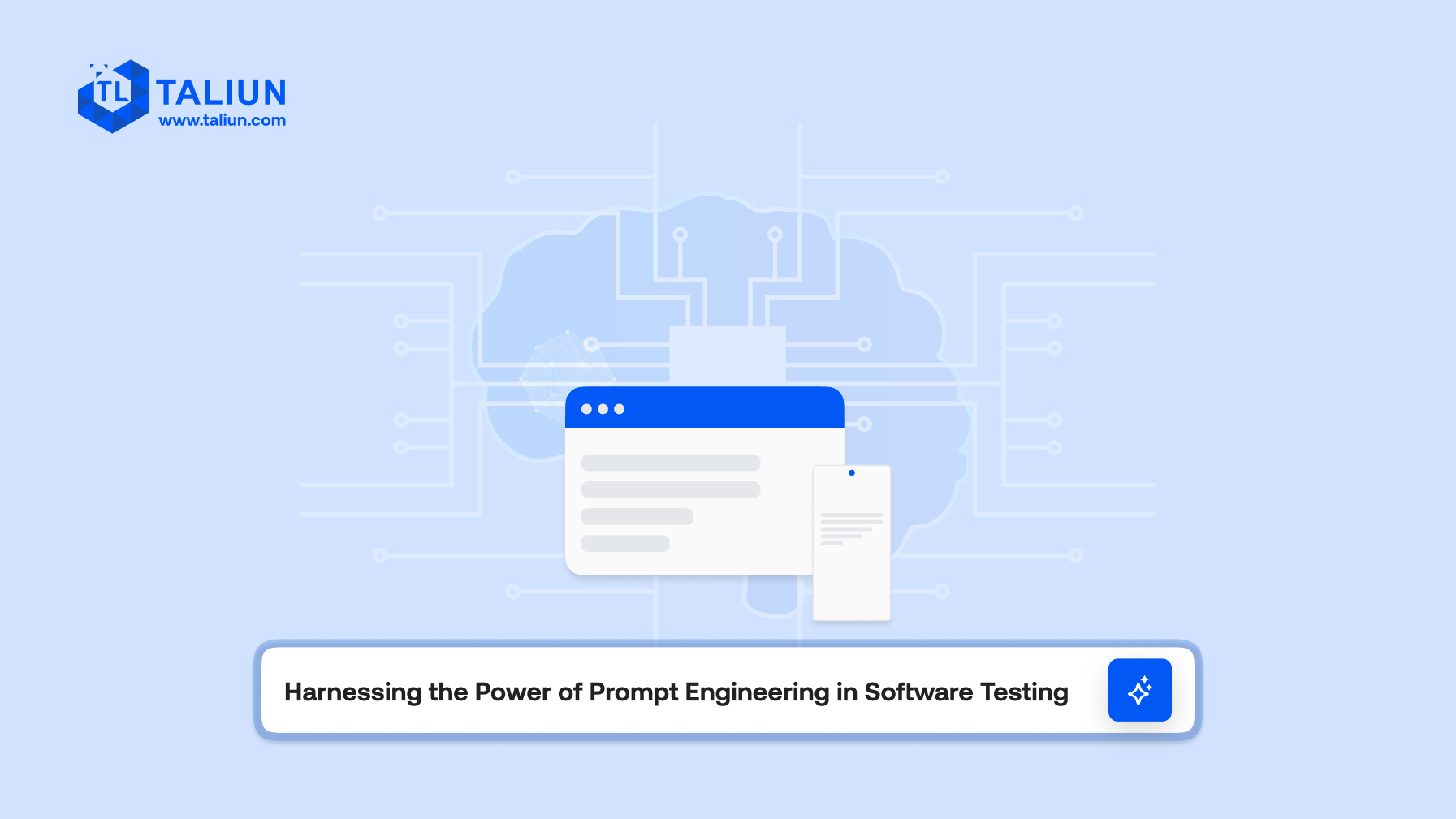Harnessing the Power of Prompt Engineering in Software Testing

In the ever-evolving landscape of software development, the introduction of artificial intelligence (AI) and machine learning (ML) has brought about revolutionary changes, particularly in the field of software testing. One such advancement is prompt engineering, a methodology that involves crafting effective prompts to guide AI models in generating useful, accurate, and contextually relevant responses. This blog post delves into how prompt engineering can significantly enhance software testing processes, ensuring more efficient, reliable, and innovative outcomes.
Understanding Prompt Engineering
Prompt engineering revolves around the concept of designing inputs that effectively communicate with AI models. In software testing, these prompts are used to specify testing requirements, outline scenarios, and guide AI in simulating real-world conditions and user interactions. The accuracy and relevance of the output from an AI model are heavily dependent on the quality and precision of the prompts provided.
The Role of Prompt Engineering in Software Testing
1. Enhanced Test Case Generation: Traditional test case generation often requires extensive manual effort and deep domain knowledge. Prompt engineering simplifies this by enabling testers to create comprehensive and diverse test cases just by providing detailed, scenario-based prompts to an AI model. This not only saves time but also uncovers edge cases that might be overlooked in manual processes.
2. Automated Bug Detection and Analysis: By employing well-crafted prompts, AI models can be guided to automatically detect anomalies and potential bugs in the software. These prompts can direct the AI to perform specific actions, mimic user behavior, or check for compliance with certain standards, thereby identifying issues more swiftly and accurately than manual testing.
3. Realistic User Simulation: Through sophisticated prompts, testers can instruct AI models to mimic real user behaviors and interactions with the software. This enables the identification of usability issues, enhancing the overall user experience of the product.
4. Continuous Integration and Deployment (CI/CD) Support: In CI/CD environments, prompt engineering can facilitate the automation of regression testing and other repetitive tasks. By integrating AI-driven tests that are guided by precise prompts, software teams can ensure consistent quality and faster deployment cycles.
Best Practices in Prompt Engineering for Software Testing
To leverage the full potential of prompt engineering in software testing, certain best practices must be followed:
Clarity and Specificity: Prompts should be clear, unambiguous, and as specific as possible to guide the AI model accurately.
Iterative Approach: Testing teams should adopt an iterative approach, refining prompts based on the responses received and the evolving requirements of the testing process.
Understanding AI Capabilities: A deep understanding of the AI model’s capabilities and limitations is crucial for crafting effective prompts.
Collaboration between Testers and AI Experts: Collaboration between testing professionals and AI experts is essential to ensure that prompts are effectively aligned with both testing goals and AI functionalities.
Conclusion
Prompt engineering represents a significant step forward in the realm of software testing. By harnessing the power of AI and ML through well-designed prompts, testing teams can achieve higher efficiency, uncover deeper insights, and ensure that software products meet the highest standards of quality and user satisfaction. As the field of AI continues to advance, the role of prompt engineering in software testing is poised to become increasingly integral, opening new horizons for innovation and excellence in software development.




